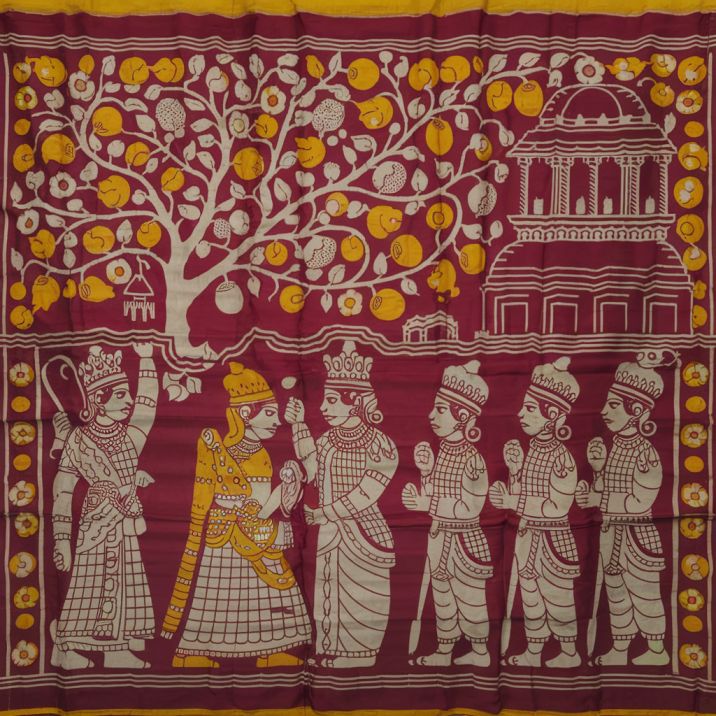The Artistry Tale of Pasapalli Saree Patterns
Few sarees in the vibrant tapestry of Indian textiles capture the imagination quite like the Pasapalli saree. Originating from the prosperous state of Odisha, this exquisite saree is a handloom treasure. It’s a canvas that narrates stories through intricate patterns, symbolizing artistry, heritage, and craftsmanship. Let’s take a mesmerizing journey into the world of Pasapalli sarees and uncover how their patterns weave stories that transcend time.
Origins Rooted in Tradition
The Pasapalli saree takes its name from the traditional game of Pasa, an ancient form of dice. The bold and geometric checkerboard patterns, which are the hallmark of these sarees, resemble the chessboard-like layout of this ancient game. Each square, meticulously crafted, represents an aesthetic element; it’s a nod to the cultural legacy of Odisha and the intricate handloom artistry passed down through generations.
A Tradition Fused With Precision
The creation of a Pasapalli saree is no simple feat. The weavers, primarily from the western region of Odisha, dedicate countless hours to handcrafting each piece. They employ the unique Ikat technique, wherein threads are carefully tied and dyed before being woven into the fabric. This process ensures the patterns are perfectly aligned, creating the characteristic precision for which Pasapalli sarees are known.
Every thread tells a tale of commitment and skill, with each weaver contributing their unique touch. The meticulously woven patterns reflect not only the creativity of the artisan but also the mathematical precision that brings the checkerboard design to life.
Patterns that Speak, Geometric and Symbolic
The signature checkerboard design of Pasapalli sarees is a visual treat and is deeply symbolic. The alternating black and white squares mirror the highs and lows of life, the balance between opposites, and the duality of existence. Some interpretations see the squares as a representation of harmony and equilibrium, with each line and curve telling a story of balance in the chaos of life.
In many ways, these sarees act as storytellers, with the patterns weaving narratives of the wearer’s journey. The designs’ symmetry and boldness evoke a sense of strength, while the contrasting colors—often in vibrant reds, blacks, and whites – symbolize energy, passion, and purity.
A Kaleidoscope of Colors Beyond the Checkered Square
While the checkerboard design is the most recognizable element, Pasapalli sarees are far from limited in their visual language. These sarees often feature a medley of colors and motifs. People commonly see reds, yellows, greens, and blues, each color having cultural significance. The border of the saree is another area where artisans showcase their creativity, with intricate patterns and motifs ranging from floral designs to temple-inspired artwork.
In Odisha, each Pasapalli saree is unique, almost like a living piece of art. The saree can tell a story of festivals, seasons, and ceremonies. It is worn proudly during auspicious events, lending its beauty to the grandeur of the occasion.
The Legacy Continues
In an era of fast fashion, the Pasapalli saree is a testament to the value of slow, handwoven art. Its popularity has surged in recent years as more women worldwide seek to connect with traditional craftsmanship while making bold fashion choices. The Pasapalli saree remains a true symbol of grace and elegance, from weddings to festive gatherings.
A Woven Canvas!
The Pasapalli saree is a masterpiece that embodies artistry, culture, and sustainability. Each pattern, color, and motif tells a narrative waiting for you to uncover, making every drape a personal story. As you wear a Pasapalli saree, you are not just wearing a random saree; you are stepping into a rich tradition that connects you to the heart of Odisha.


